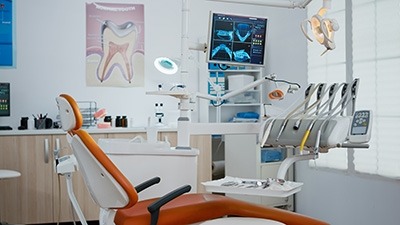How Data Science and Digital Dentistry Can Improve Dental Care
Digital technologies promise better care by linking dental and medical records, improving diagnostics, and enabling personalized treatment
From surgical tools to imaging devices, new technologies are continually improving the field of dentistry. But according to NIDCR Director Rena D’Souza, D.D.S., Ph.D., the current frontier of dental technology is data science.
“This is a field that will transform everything,” Dr. D’Souza said.
For example, computer programs (algorithms) have been created and extensively trained to recognize certain medical conditions. Such programs could help interpret laboratory results and improve diagnostics.
“Let’s say I take an X-ray because I suspect there’s something suspicious beneath your tooth,” Dr. D’Souza said. “An algorithm could help me determine whether it is an abscess, a tumor, or just scar tissue. I could get a sense of how to treat you through what’s called machine learning, or artificial intelligence.”
On the cutting edge
Dr. D’Souza said dentistry has always been a leader in advancing new technologies to improve care for patients. “In the past two decades, dentistry has moved into a very digital era. Increasingly, digital technologies are enabling more efficient and precise dental care.”
She cited the boom in computer-assisted design and manufacturing, along with 3D printing, to create more accurate and natural-looking restorative materials, such as crowns and dentures. As these technologies improve and their costs come down, custom-made restorations will become more accessible to more people, she said.
Similarly, 3D bioprinting, which builds living tissue from cells and other biological materials, can aid in regenerating damaged or diseased oral tissue. Practitioners can take digital scans of the mouth to create 3D models of oral structures to assist in diagnosis, surgery, and treatment planning.
Interconnectivity
For now, though, Dr. D’Souza believes the most impactful advancement in dentistry would be better infrastructure to connect health care professionals across different disciplines. Integrating all of a patient’s medical records—including dental records—would enable health care providers to “share data, communicate, and work together to find solutions that are based on the patients’ needs,” Dr. D’Souza said.
“For example, say you come in for a routine dental cleaning and tell me your gums are bleeding a little more than usual. If I had access to technology that links dental and medical records, I could actually go into your medical record, figure out if you’re taking any drugs that increase your risk of bleeding, and work with your physician to come up with a comprehensive treatment plan.”
As computing power has expanded, Dr. D’Souza said researchers now have the opportunity to perform “big data” analyses to better understand the connections between oral and overall health, and to find new ways to treat and prevent disease.
“That sounds really kind of pie-in-the-sky crazy, but it isn’t actually, because it means that we will look at you holistically,” she said. “I believe that an integrated, holistic approach is the most necessary next step for improving the field of dentistry.”
Related Links
This article was written by Ross Elliott and originally appeared on futureofpersonalhealth.com on March 23, 2023.
Subscribe for NIDCR Updates
Receive email updates about the latest advances in dental, oral, and craniofacial research.
October 2024

